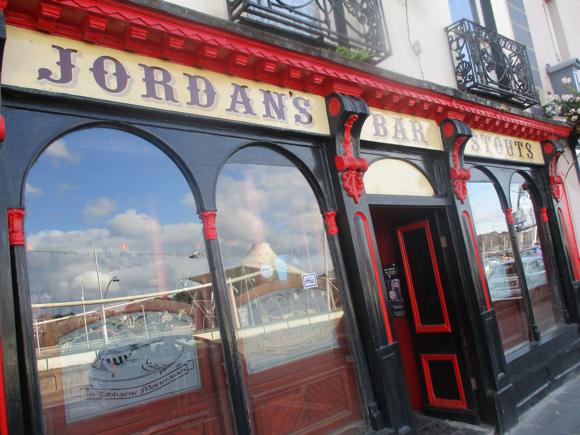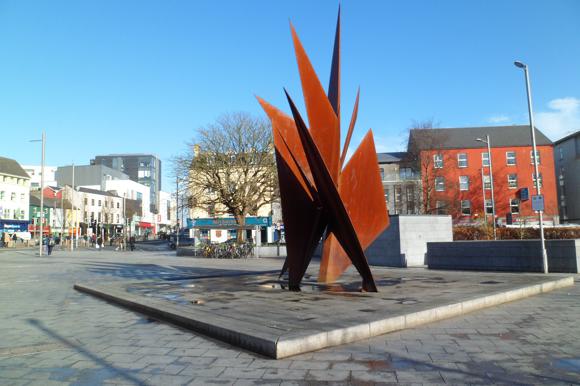Teams, tales and tips – a guide to the local game
The former soccer stronghold of Waterford was looking forward to the return of European football in 2019 after an absence of more than 30 years. Promoted to the Premier Division in 2017 after a decade in the doldrums, flagship club Waterford FC claimed a fourth-place slot in 2018 to join nearly 100 cup winners and high achievers in the Europa League.
For ex-Ireland U-21 international Lee Power, this major turnaround confirmed the faith he showed when taking over the moribund club in late 2016. Restoring the original name of Waterford FC, Power understood the pride felt by many older fans in the club that won six League of Ireland titles in eight seasons, between 1966 and 1973.
During that time, the Blues also gave creditable performances against George Best’s Manchester United, Celtic and Galatasaray, all in Europe’s premier competition.

That first league win of 1966 was achieved under Paddy Coad, the greatest footballer Waterford ever produced, whose skills were only seen in Ireland or in an international shirt. Head of a soccer dynasty that carries on to this day – grandson Conor made several appearances for the Blues in 2014 – Coad links back to the early era of first-class football in the city.
Revered by the greats of Irish football, Paddy Coad is honoured with a blue plaque at the house where he lived on Doyle Street, near Lower Yellow Road where his first junior club, Corinthians, were based. Born in 1920, Coad would not have remembered the fighting that raged in Waterford 1922 during the Irish Civil War.
Until then, local football had been dominated by British Army sides. Royal Engineers of FA Cup fame, the 3rd Dragoon Guards and the Rifle Brigade all won the Munster Senior Cup, instigated by the Munster FA in its foundation year of 1901. From 1922 onwards, the winners’ roster featured only teams from Cork – until Waterford’s first triumph 1935.

Coad, who first ran out for Waterford two years later, would have learned his football when there were several junior sides in town, including his own Corinthians. One, called Young Favourites, were based at Ballynaneasagh, south-west from the city, past the current home of Waterford FC, the Regional Sports Centre. Today the Crystal Sports Centre stands opposite this early ground, since swallowed by the cemetery at St Otterans Church.
Another was Waterford Celtic, based at Ozier Park, the spiritual home of soccer in the city, redeveloped and unveiled in 2009. On Poleberry Terrace, just over narrow John’s River from the RSC, Ozier Park hosted its first game in 1924.
With the League of Ireland opening up beyond once dominant Dublin, and teams from Cork monopolising the game in Munster, by 1930 the need for a senior club to represent Waterford became pressing.
Equally, this club required a stadium of better standard than the pitch at Ozier Park. A site was duly found at Kilcohan Park, less than 1km from today’s RSC.

Shortly before the 1930-31 season began, it was announced that a ‘Waterford Celtic’ would be part of the expansion of the burgeoning League of Ireland to 12 clubs. For reasons unclear, the club name switched to Waterford AFC – it’s also not known how many players came from the Young Favourites, and how many from Celtic.
Meanwhile, the league debutants played their first home games at Ballynaneasagh while Kilcohan Park was being built.
But built it was, a proper sports ground with grandstands, in November 1930. Also used for greyhound racing, its current purpose, Kilcohan Park would serve Waterford through the golden era and beyond.

The Regional Sports Centre, opened in 1993 and host of a number of Ireland Under-21 games, is surrounded by pitches where junior sides play – Waterford Bohs at Poleberry Park, Villa FC at Connors Park on Ozier Terrace, Ozier Park itself – but Waterford FC remain the main game in town.
In the end, of course, in 2019, the swiftness of WFC’s recent transformation counted against them and they were refused entry to the Europa League. UEFA, bizarrely, aren’t keen on fly-by-nights. In 2021, with relegation looming, Lee Power sold the club on.
Which meant, thanks to the long-term lowly status of nearby Wexford FC, the local clash with Waterford was revived, along with the Munster Derby with Cork City, wallowing in Ireland’s second tier.
Getting Around
Arriving in town, local transport and timings

Although it witnessed Ryanair’s first scheduled international flight, Waterford Airport currently has no commercial services.
The nearest main airport is Cork, 127km (79 miles) away but there’s no direct public transport link with Waterford – you’ll have to take Bus Éireann services 226 and 226A (every 30mins, journey time 30mins) for the 6.5km (four miles) to Parnell Place station in town (€5 online), and go on from there. A Cork Taxi (+353 21 4 27 22 22) into town should cost around €20.
An hourly Bus Éireann Expressway coach then takes 2hrs 15mins to Waterford bus station (€10). Alternatively, a Dublin Coach runs every 2hrs from Cork/St Patricks Quay just over the water to Merchants Quay in Waterford (€10, 2hr journey time) alongside the bus station.

Dublin Airport is 175km (109 miles) away. From Zone 11 Stop 2, a direct Bus Éireann Expressway coach takes 3hrs to Waterford bus station (every 2hrs, €20). The quicker service (2hrs 45mins) is less frequent.
The regular train from Dublin Heuston to Waterford Plunkett takes 2hrs, online tickets €16. Once arrived, walk over the bridge to town. Waterford bus station is conveniently by the city centre but a long walk to the stadium – use public transport or a taxi.
Local buses in Waterford run on the Ireland-wide Leap Card system (€10 including €5 travel credit), €1.68 deducted per journey, touch in when you board – or pay the driver around €2 cash.
Based halfway between town and the stadium, Waterford Taxis +353 51 33 10 33 have their own app and online booking, including airport transfers.
Where to Drink
The best pubs and bars for football fans






Waterford has scores of drinking destinations and two main drinking hubs. By the waterfront and behind it on O’Connell Street, quality pubs attract a sensible but hard-drinking fraternity. There, the tremendous Tullys offers a buzzy contrast to the indelibly old-school Thomas Maher opposite. Expect live sounds, rare beers and a squeeze around the narrow bar area in one, older bonhomie in the other.
Then there’s The Hub, both the name of an Irish drinkerie with TV football, and the Bermuda Triangle of bars nearby, where John and Parnell Streets cross, mobbed by twentysomethings and younger at weekends. Typical of the genre is the late-opening Kazbar, all TV sport and live music, with the Market Bar (11 John Street) opposite a mecca to rock’s rich tapestry, classic album covers on the wall and a soundtrack of revered tunes.








Back overlooking the water, Jordan’s American Bar has been a mainstay of live music since 1948 while round the corner, the Munster Bar dates back to 1853, though everything’s gone gastro in recent times.
By the bridge, the Grattan Bar (est 1826) is a classic sport-watching spot, though best football bar in town bar none is Alfie’s, just up Bridge Street over to Ballybricken. Opened by Waterford legend and soccer entrepreneur Alfie Hale, this lived-in pub was the main pre-match meeting spot until Norris’s nearer the ground assumed the mantle. The decor offers a lesson in local football history, the Coad dynasty, revered Irish internationals and otherwise forgotten finals all depicted and framed. Weekends mean live music Saturday and Sunday.
Further along Ballybricken, The Tap Room is quiet-pint territory, halfway between O’Connell Street and The Hub.
Where to stay
The best hotels for the ground and city centre







Visit Waterford has a hotel database.
Across the roundabout from the ground, Travelodge Waterford has standard rooms and free parking. Nearby, a row of B&Bs on the main road towards down includes the comfortable, friendly Hazelbrook, The Vee and St Albans (+353 51 358 171).
On this side of town, near pre-match pub Norris’s, The Barley Field (35-36 Barrack Street, +353 51 371 606) comprises 21 guest rooms and a friendly bar. Close to town, on the main road out to the stadium, the Avondale Guest Accommodation consists of only two bedrooms (€80-€90) but extremely comfortables ones, with power showers.
Across the road, nearer the river, the upper mid-range Tower Hotel is also a leisure centre, with a deck-level lane pool, gym, steam room and sauna.






The main hub of hotels is across from the bus station, where the historic four-star Granville is one of Ireland’s oldest, with close ties to Thomas Meagher, who designed the Irish flag. Expect coachloads of American tourists – Meagher was a pallbearer at Lincoln’s funeral.
Further up towards the bridge, 112-room Dooley’s has been in the same family for nearly 80 years. Nearby, unpretentious, affordable Sal’s is ideal for a drinking weekend – pub downstairs, hearty breakfast one floor up. The Anchorage is also good value at €30/person, en-suite rooms a notch-above. Alongside, mid-range Treacys comes with a spa, gym and heated pool.
On Bridge Street itself, the corner Fitzwilton is the contemporary choice, upscale restaurant, Met Bar and free parking.











